Bellows
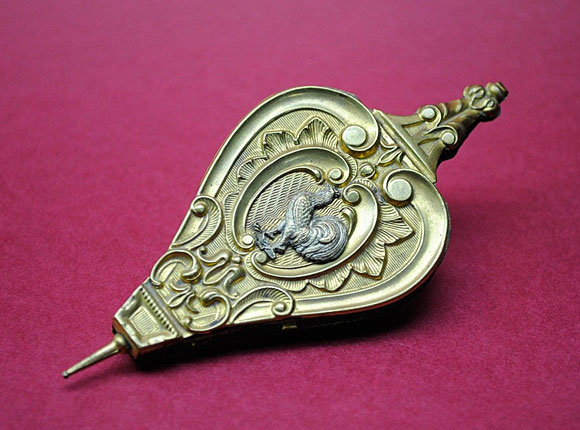
Needle Case with rooster in center (photographs from eBay, now part of Lynda Herrod's collection)
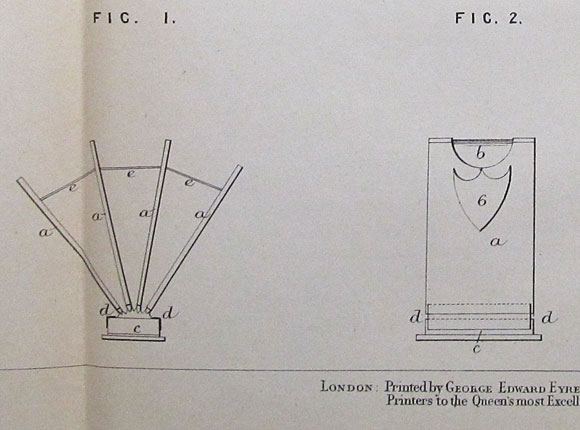
Patent Figure 1 and 2

Patent Figure 3
Design Details
Needle Case Type: |
Figural (patent doesn’t specify cover design however, this item employs the same concepts and shape as the Fan Needle Case which
is included in UK Patent 1868-8 |
Patent/Registered to: |
Henry Milward & Sons – Redditch (provisional registered to Theodore Givry, Paris) |
Patent/Design Representation #: |
Mechanical Patent: #8 (Provisional: #1778 registered July 17, 1867) |
Patent/Design Registration Date: |
January 1, 1868 |
Location of Patent/Design Registration: |
Mechanical Patent - British Library - Business and Intellectual Property Centre - London
Provisional - The National Archives (TNA) - Kew, UK |
Reference #: |
TNA Representation - BT 46/6/1808
TNA Register - BT 48/2 |
Dimensions: |
11cm x 5cm x 1.2cm |
Material: |
Brass |
Name Variations: |
Unmarked |
Other Variations: |
a) With rooster in center on one side
b) With Prince of Wales feathers in center (a photograph of this needle case is available at www.averyneedlecases.com) |
Additional Photographs
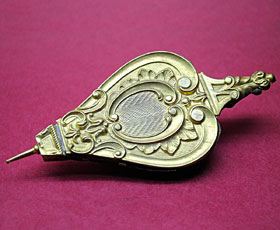
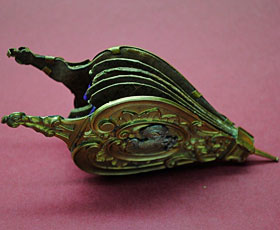
Back and side view
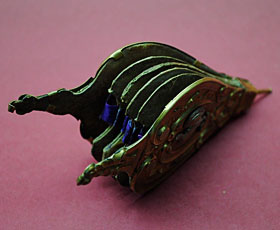

Interior views with sections for needle packets
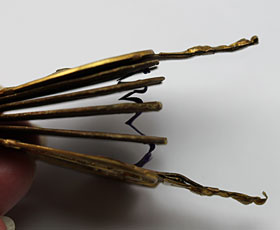

Interior side view showing ribbon that governs how wide the bellows can open with catch at the top that holds the front
and back pieces together (photo courtesy of Lynda Herrod) and detail of exterior center rooster

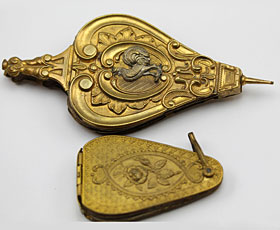
Exterior views with the Fan Needle Case showing similarities (photos courtesy of Lynda Herrod)
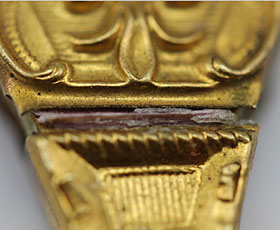
Detail showing the flexible hing on the back side that allows the bellows to open and close (photo courtesy of Lynda Herrod)
Facts

Bellows are designed to deliver a strong blast of air, increasing the oxygen available, which assists in starting, maintaining and raising the
temperature of a fire. Domestic bellows typically consist of a pair of rigid, usually wooden, sides with shaped handles. The sides are
joined by flexible leather so that an airtight cavity pouch created between the sides can be expanded by moving the handles apart and allowing air
to enter through a valve in one side. The air is rapidly expelled through a metal pipe fixed to the base where the sides are hinged and when
the handles are brought together to decrease the volume of the cavity.
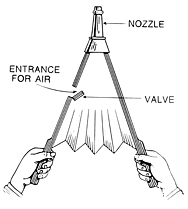
History
The precise origin of bellows is unknown but they are thought to have been around since ancient times since it is likely that it was quickly
noticed that wind gusts or blowing on a fire assisted in keeping it burning. Early types were probably animal skin sewn into bags manipulated
to force air through a small opening and use most likely began simultaneously in many parts of the world. By medieval times large bellows
were being used in forges and for smelting and although these were largely replaced by smaller more efficient air blowing machines by the end of
the 19th century, domestic bellows are still used today. In Victorian times where open fire was the means of cooking and heating, the bellows
were an essential and well used tool. Although some rare, pre 19th century, examples have survived, many would be discarded once the leather
became dry and split or the nails used to attach the leather to the wood were lost and mending no longer an option. Below: detail of an old
drawing with a bellows. Click on the picture below to see a larger version of it.
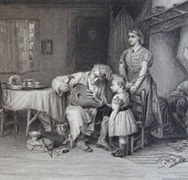
Miscellaneous
Bellows and related terms were part of the vernacular used by men in the 19th century. Examples of colloquial speech or “slang” used on
the streets or in male company included the terms “bellows” for lungs; “bellowser” meaning a blow to the stomach that winded or took the breath away
and “bellows to mend” describing a winded person usually a fist fighter when they were out of breath presumably after receiving a bellowser.
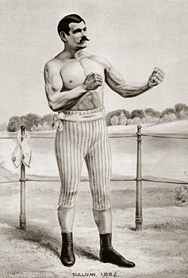
Note: Right side panel text and photos provided by Lynda Herrod.




















